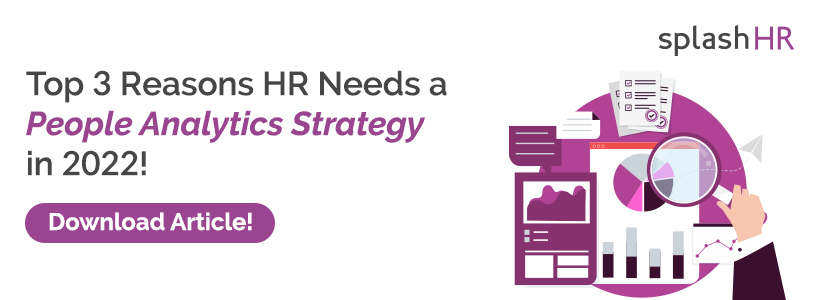Introduction
The COVID-19 pandemic has made an already challenging talent management process even more complicated because we don’t accurately understand what will happen next. However, having a clearly defined talent management approach provides a competitive organizational edge.
An enterprise’s capability to react to threats, catastrophes and other challenges relies on an efficient workforce. Just getting job applicants in the door is no longer adequate in either the public or private sector.
The process to discover, employ, and develop exceptional employees is known as talent management. Its prominence is increasing in proportion to a workforce that now can be more demanding about its employment options.
Talent leaders aim to provide employees a reason to stay rather than hop from company to company to accomplish their career objectives.
Why Talent Management, and what are the four critical areas of talent management?
Talent management enables companies to attract, evolve and maintain a workforce adjusted to succeed. Uncovering the right workforce and retaining them is a continuous challenge for most enterprises.
Millennial and Gen Z employees tend to be more mobile than senior employees. According to Sierra-Cedar, the average term of a worker in the 20-to-35 age group is four years. Understanding how to engage Millennials in the workplace can significantly help in retaining this dynamic segment of the workforce.
When you successfully employ your ideal workforce, you have to maintain them. Fortunately, top talent management techniques and a benchmark for success help companies find suitable people and grow them for future success.
The right person in a suitable job at the perfect time is always a win for any organization. Managing talent is critical to achieving it. Managing Talents is one, but what if an analytics tool guides you towards an optimal decision from the Talent Management process? Let’s look at what Talent Management is all about and why it is required before diving into the analytics part.
Why Talent Management?
Think of your workforce like a race car. It’s a machine with high-performance capabilities, but it requires constant care to maintain and to help it reach its peak.
Performing the Evaluate Worker Performance activity is like running engine diagnostics on this powerful machine. Since workers and managers are evaluating each other, it’s almost as if the machine is running diagnostics on itself.
Here are the top four critical areas of talent management:
1. Goal Management
In sports, as in business, the first step towards victory is figuring out where the net, fence, or basket is. Once you know the goal, you can drive your team towards its success. Workers, managers, and leaders can define and set goals that support the common objectives of the enterprise. You can erect the goalposts and evaluate your team’s performance in achieving them.
2. Talent Review
Sometimes you need to step back and evaluate your team. The talent review process is structured around one or more talent review meetings to assess strengths and address the organization’s risk areas. Participants review worker profiles, performance, goals, and compensation data in a talent review meeting. Data from each session is maintained automatically for use in future discussions. You can use this information to estimate employee progress between talent reviews.
3. Succession Plan
Sad as it sometimes is, no employee lasts forever. People retire or move on to other career opportunities and leave a person-shaped hole in your workforce. You need to close that hole quickly. Using succession management, you can be ready to plug that space at the drop of a hat by creating succession plans for key personnel. These plans identify workers who are ready immediately for jobs that aren’t currently vacant and those who can develop the necessary skills.
4. Career Development
Everyone has hidden potential. Like gemstones, all they need is a little shaping to shine. Talent Management helps your organization to shape and polish your workforce.
Benefits of talent management
To maximize the effectiveness of talent management, organizations should adopt talent management best practices that align with their strategic goals.
1. Resource Availability
At times, resource planning to complete ad-hoc needs can be daunting. A talent management tool provides a comprehensive insight into resource profiles. Workers can validate their supervisor’s skills and competencies before updating them on the system. It helps the company determine the suitable person for the fitting project at the right time and price. Also, assigning resources considering their talents and interests encourages them to stay constructive and assures timely delivery of projects.
2. Employee Engagement
One of the fundamentals of talent management is to recognize and foster skills. Assigning over/under skilled resources to projects can cause employee burnout and schedule overruns. So, companies can workforce planning tools to organize team members to activities based on their capabilities and interests. It has a powerful effect on employee motivation and productivity.
3. Succession Planning
Succession planning is an integral approach that helps build a proficient workforce qualified for sufficing leadership and other crucial roles as the company develops, shifts, or evolves. Succession planning assures that productivity and employee confidence aren’t impacted during business growth or leadership turnover.
4. Builds Effective Teams and Culture
Understanding how employees work and what encourages them can make project deliveries successful. If the administration takes bold risks, one can get many projects started. Still, the delivery team will flounder to finish them on time. At the same time, if the administration team is detail-oriented, there will be no innovation culture.
One requires a mixture of different types of employees as per their function. Talent management processes can use specified personality tests during the hiring of employees, which helps enhance communication, teamwork, and productivity at the workplace.
5. Improves Employee Retention
In a highly volatile market, growing and retaining a talented resource pool is one of the immediate business goals for sustainability. Employee turnover expenses are high that adversely impacting the bottom line. The cost of employee turnover also encloses soft expenses such as reduced productivity, decreased engagement, training fees, and cultural influence. If turnover is unavoidable, it also contains succession planning for business continuity.
SplashBI for HR Analytics
Today, many cloud applications provide Talent Management solutions for small/mid/big organizations. Still, there is a downside or scope for improving software Reporting & Analytics, especially when you are looking for highly scalable, customizable, pre-built content for end-user reporting needs.
SplashBI for HR addresses the gap and fits in as a one-stop-shop for the Reporting & Analytics needs. It provides the BI Platform, and on top of it, the Analytics needed to provide the insight of the data with faster and minimal efforts.
With SplashBI for HR:
- Deploy as On-Premise or Cloud
- Report and Interactive Data Visualization
- Robust Security Model (Can set to decide who can see what)
- Native Data Models to Support any Talent Management Software (be it Oracle / Workday / ADP or any other Software)
- Data Collection / Data Modelling / Optimization Algorithms / Predictive Engines all done behind the scenes in a synchronous way
- Support multiple ERP Systems (Say if HR is in Workday, Talent is in the Oracle)
- Pre-built KPIs with drill downs
- Ease to develop custom Reports and Dashboards on the fly










